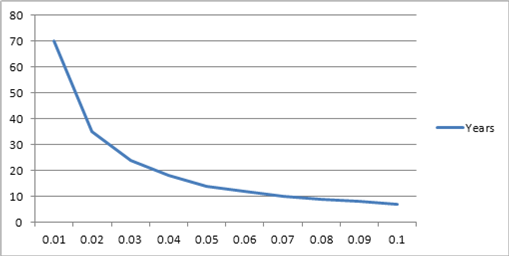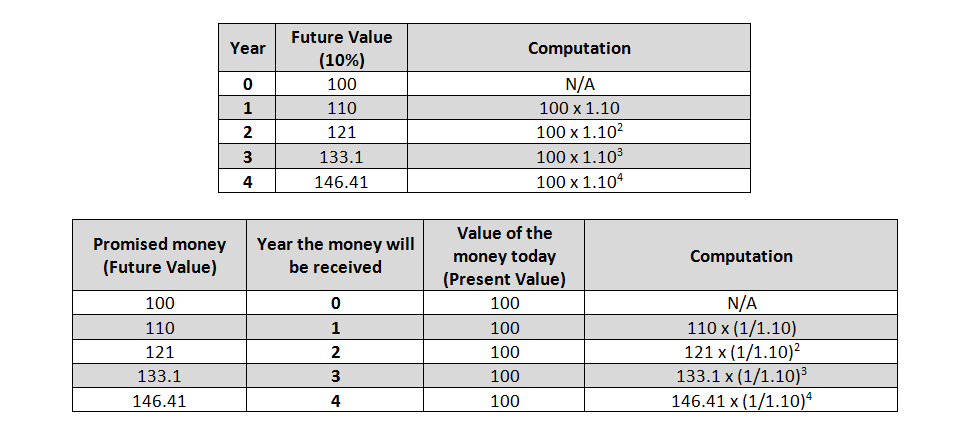In order to illustrate the concept of the time value of money
Post on: 25 Апрель, 2015 No Comment

Essential Concepts
in Managerial Finance
Chapter 2 Analysis of Financial Statements
Chapter 3 The Financial Environment: Markets,
Institutions, and Investment Banking
CHEPKO DANIL. PA R T
Essential Concepts
in Managerial Finance
Chapter 2 Analysis of Financial Statements
Chapter 3 The Financial Environment: Markets,
Institutions, and Investment Banking
CHEPKO DANIL VITALEVICH/SHUTTERSTOCK.COM
Chapter 4 Time Value of Money
Editorial review has deemed that any suppressed content does not materially affect the overall learning experience. Cengage Learning reserves the right to remove additional content at any time if subsequent rights restrictions require it.
33733_ch02_ptg01_hires.indd 18
COMSTOCK IMAGES/GETTY IMAGES
Chapter 2
ANALYSIS OF FINANCIAL
STATEMENTS
Learning Outcomes:
LO 1
Describe the basic nancial information that is produced by corporations and explain how the rms stakeholders use
such information.
LO 2
Describe the nancial statements that corporations publish and the information that each statement provides.
LO 3
Describe how ratio analysis should be completed and why the results of such an analysis are important to both managers
and shareholders.
LO 4
Discuss potential problems (caveats) associated with nancial statement analysis.
inancial statement analysis involves evaluation of a rms nancial position to identify its
current strengths and weaknesses and to suggest actions that the rm might pursue to
take advantage of those strengths and correct any weaknesses. In this chapter, we discuss
how to evaluate a rms current nancial position using its nancial statements. In later chapters,
we examine actions that a rm can take to improve its nancial position in the future, thereby
increasing the price of its stock.
Chapter 2
Analysis of Financial Statements
Editorial review has deemed that any suppressed content does not materially affect the overall learning experience. Cengage Learning reserves the right to remove additional content at any time if subsequent rights restrictions require it.
33733_ch02_ptg01_hires.indd 19
annual reportA report
issued by a corporation to its
stockholders that contains basic
nancial statements, as well as
the opinions of management
about the past years operations
and the rms future prospects.
balance sheetA statement that shows the rms
nancial positionassets and
liabilities and equityat a
specic point in time.
LO 1
FINANCIAL REPORTS
Of the various reports that corporations provide to their
stockholders, the annual report probably is the most important. This report provides two types of information:
1. Discussion of operationsdescribes the
firms operating results during the past year and discusses new developments that will affect future operations.
2. Basic nancial statementsinclude (a)
the balance sheet, (b) the income statement, (c) the
statement of cash flows, and (d) the statement of retained earnings. Taken together, these statements give
an accounting picture of the firms operations and financial position. Detailed data are provided for the two
most recent years, along with historical summaries of
key operating statistics for the past five or 10 years.1
The quantitative and verbal information contained
in the annual report are equally important. The financial statements indicate what actually happened to the
firms financial position and to its earnings and dividends
over the past few years, whereas the verbal statements attempt to explain why things turned out the way they did.
To illustrate how annual reports can prove helpful, we
will use data taken from a fictitious company called Unilate Textiles. Unilate is a manufacturer and distributor
of a wide variety of textiles and clothing items that was
formed in 1990 in North Carolina. The company has
grown steadily and has earned a reputation for selling
quality products. In the most recent annual report, management reported that earnings dropped 8.5 percent due
to losses associated with a poor cotton crop and from
Firms also provide quarterly reports, but they are much less comprehensive
than the annual reports. In addition, larger firms file even more detailed
statements that give breakdowns for each major division or subsidiary with
the Securities and Exchange Commission (SEC). These reports, called 10-K
reports, are made available to stockholders upon request to a companys
corporate secretary. Many companies also post these reports on their websites.
Finally, many larger firms also publish statistical supplements that give financial statement data and key ratios going back 10 to 20 years.
Part 2
increased costs caused by a three-month employee strike
and a retooling of the factory. Management then went on

to paint a more optimistic picture for the future, stating
that full operations had been resumed, several unprofitable businesses had been eliminated, and profits were expected to rise during the next year. Of course, an increase
in profitability might not occur, and analysts should
compare managements past statements with subsequent
results to determine whether this optimism is justified.
In any event, investors use the information contained
in an annual report to form expectations about future
earnings and dividends. Clearly, then, investors are quite
interested in a companys annual report.
Because this book is intended to provide an introduction to managerial finance, Unilates financial statements
are constructed so that they are simple and straightforward. At this time, the company uses only debt and common stock to finance its assetsthat is, Unilate does not
have outstanding preferred stock or other financing instruments. Moreover, the company has only the basic assets that are required to conduct business, including cash
and marketable securities, accounts receivable, inventory,
and ordinary fixed assets. In other words, Unilate does not
have items that require complex accounting applications.
LO 2
FINANCIAL STATEMENTS
Before we analyze how Unilates financial position
compares to other firms, lets take a look at the financial
statements the company publishes.
The Balance Sheet
The balance sheet represents a picture taken at a specific point in time (date) that shows a firms assets and
how those assets are financed (debt or equity). Figure2.1
shows the general set up for a simple balance sheet.
Table2.1 shows Unilates balance sheets on December 31
for theyears 2010 and 2011. December 31 is the end of
the fiscal year, which is when Unilate takes a snapshot
of its existing assets, liabilities, and equity to construct the
balance sheet. In this section, we concentrate on the more
recent balance sheetthat is, December 31, 2011.
Assets, which represent the firms investments, are
classified as either short-term (current) or long-term (see
Figure2.1). Current assets generally include items that
will be liquidated and thus converted into cash within
one year, whereas long-term, or fixed, assets include
investments that help generate cash flows over longer
periods. As Table2.1 shows, at the end of 2011 Unilates
current assets, which include cash and equivalents,
accounts receivable (amounts due from customers),
Essential Concepts in Managerial Finance
Editorial review has deemed that any suppressed content does not materially affect the overall learning experience. Cengage Learning reserves the right to remove additional content at any time if subsequent rights restrictions require it.
33733_ch02_ptg01_hires.indd 20














